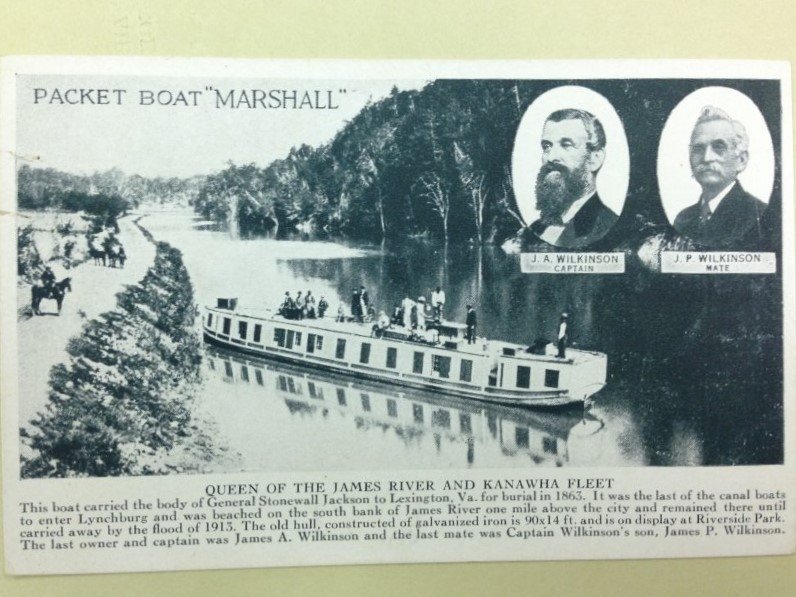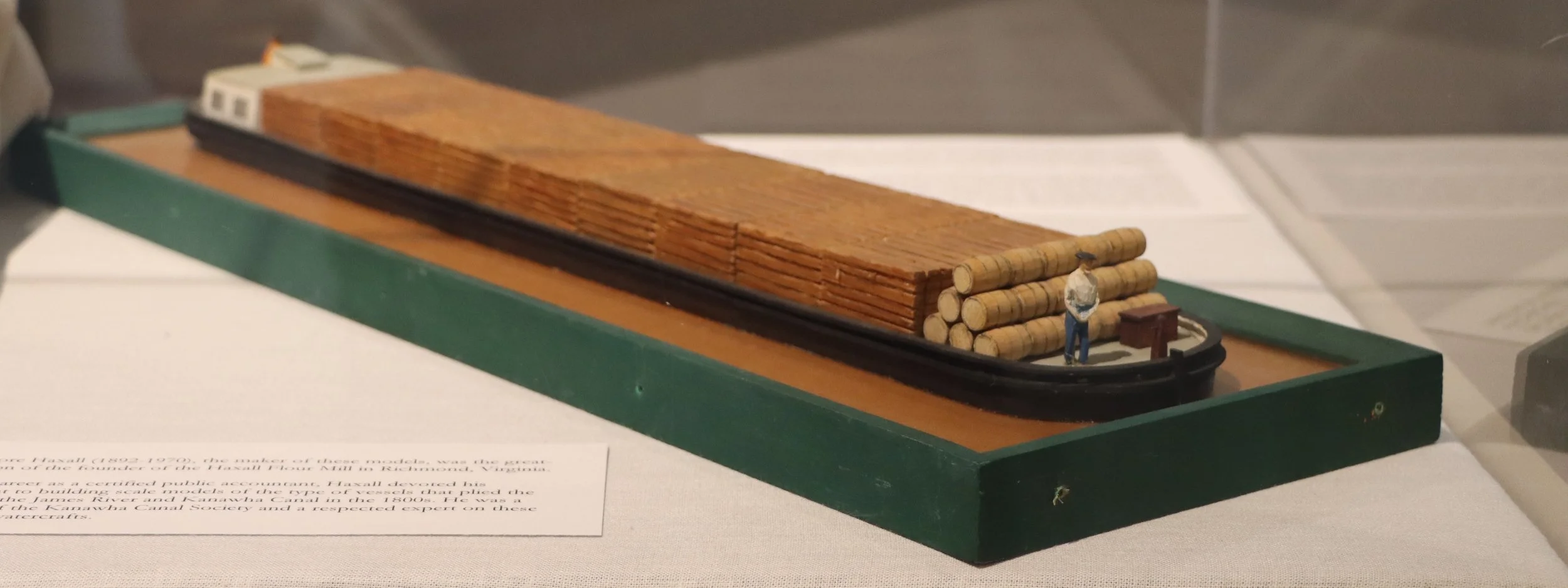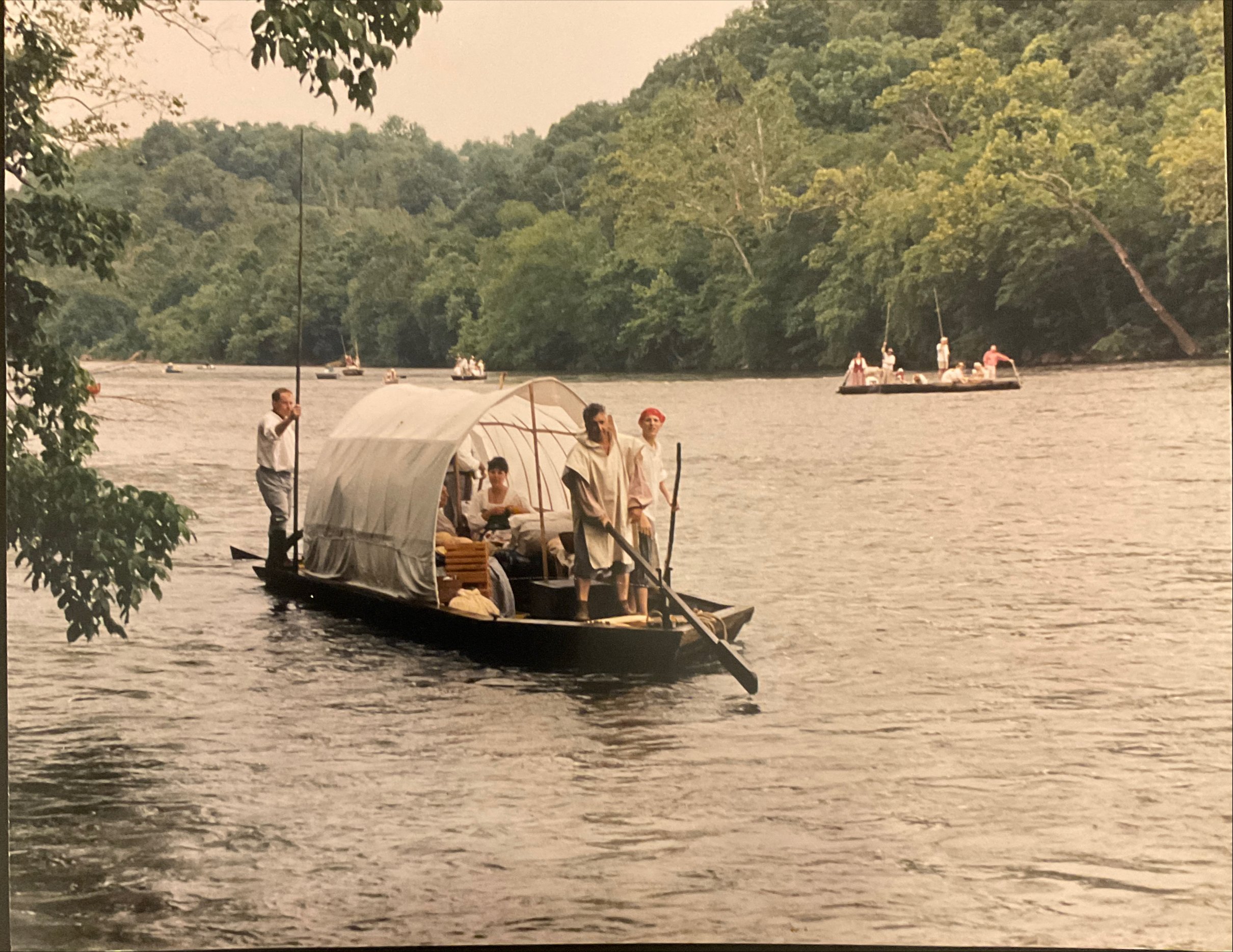Exhibit Curated by Cathy Dalton
Digitized by Noelle Beverly, Cathy Dalton, and Laura Crowe
Introduction
The James River was an important, but unreliable mode of transport in early America. The Kanawha Canal was designed to make transportation safer and more reliable. Trains, paved roads, and highways replaced this system of water transport, but the James River remains a vital resource. In addition to providing water and energy for the community, the river is a destination for sightseers and individuals seeking entertainment, and the beauty of the James River and the ruins of the Kanawha Canal.
Watercolor painting of a Canal Scene along the James River near Lynchburg.
87.31.1, Gift of Mrs. William C. Watson
October 21, 1940, Lynchburg News “Nearing the end of the Tow Path.”
X-894, Lynchburg Museum System
First Boats on the James
The first boats on the James River were dugout canoes used by the Monacans and early settlers. Canoes may still be seen on the James. Lynchburg’s existence is due to its location at a ferry crossing. As European settlers moved westward, roads were built that made travel somewhat quicker than paddling up river, but where the James flowed from the mountains into the foothills, travel became more difficult and crossing the river became necessary. John Lynch built a ferry to make a crossing more reliable than the horse ford, which was only traversable during dry weather. Eventually he built a covered bridge for travelers to cross.
Lynch’s Ferry by John P Hughes III
As Lynch’s town grew and more people settled in the area, freight and crops needed to be transported back and forth to Richmond. Previously, hogsheads of tobacco would be pulled by mules along a “rolling road.” A more reliable and profitable way to get to market was needed.
The batteau was a new style of riverboat used to transport great loads of tobacco, lumber and crops to the market in Richmond. According to Michael P. Rucker in High Water on the James:
“The first batteau was launched in 1775 by brothers Anthony and Benjamin Rucker of Amherst County, Virginia, an event witnessed by their friend and neighbor, Thomas Jefferson, of nearby Poplar Forest. Mr. Jefferson’s account reads: ‘Rucker’s battoe [sic] is 50 f. long, 4 f. wide in the bottom & 6 f. wide at the top. She carries 11 hhds. [hogsheads of tobacco] & draws 13 1/2 [inches] water.’ ”
James River Batteaumen, by Benjamin Latrobe, ca. 1798.
Courtesy Library of Virginia
“The first batteau was launched in 1775 by brothers Anthony and Benjamin Rucker of Amherst County, Virginia, an event witnessed by their friend and neighbor, Thomas Jefferson, of nearby Poplar Forest. Mr. Jefferson’s account reads: ‘Rucker’s battoe [sic] is 50 f. long, 4 f. wide in the bottom & 6 f. wide at the top. She carries 11 hhds. [hogsheads of tobacco] & draws 13 1/2 [inches] water.’ ”
Batteau on the James

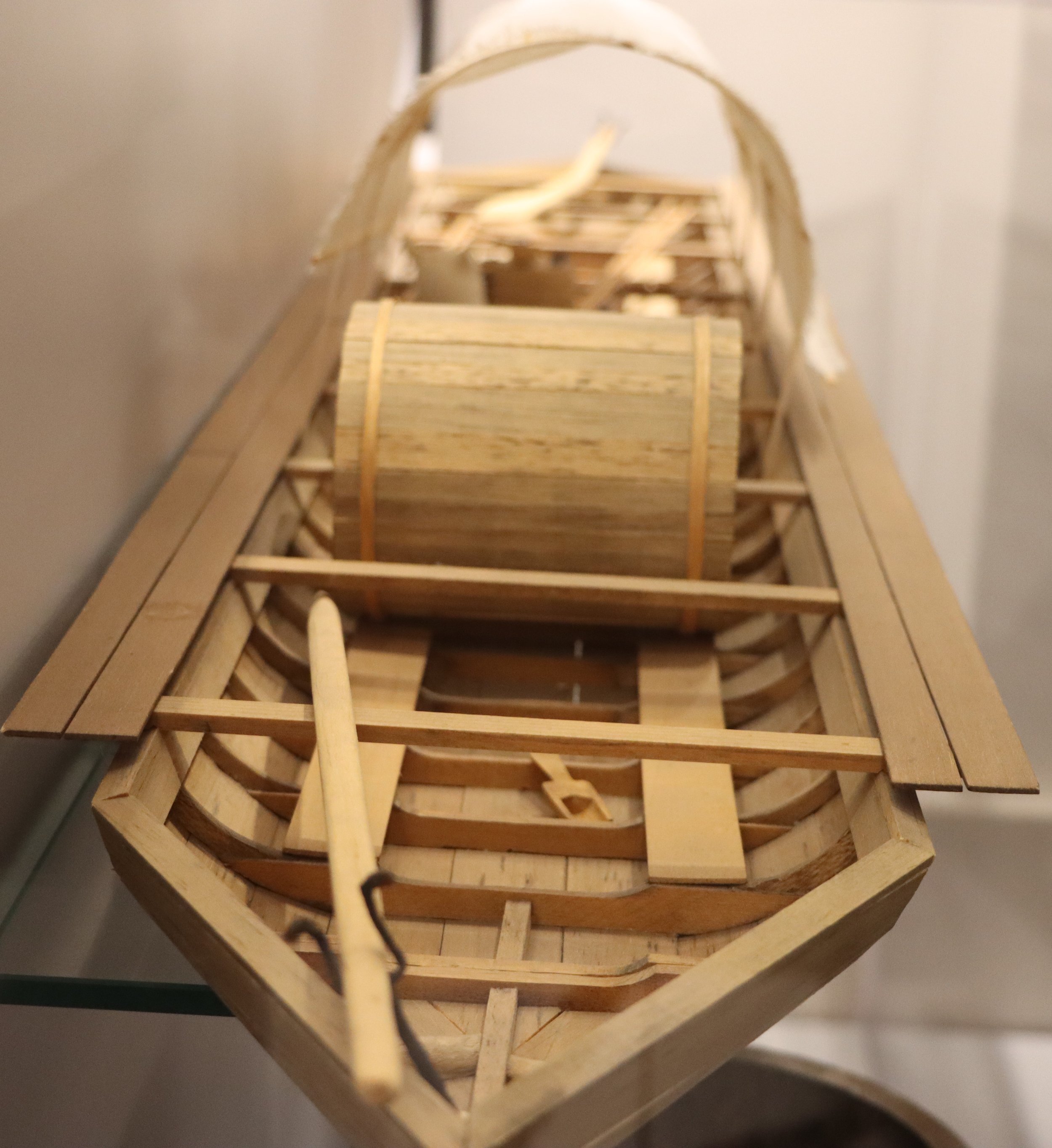
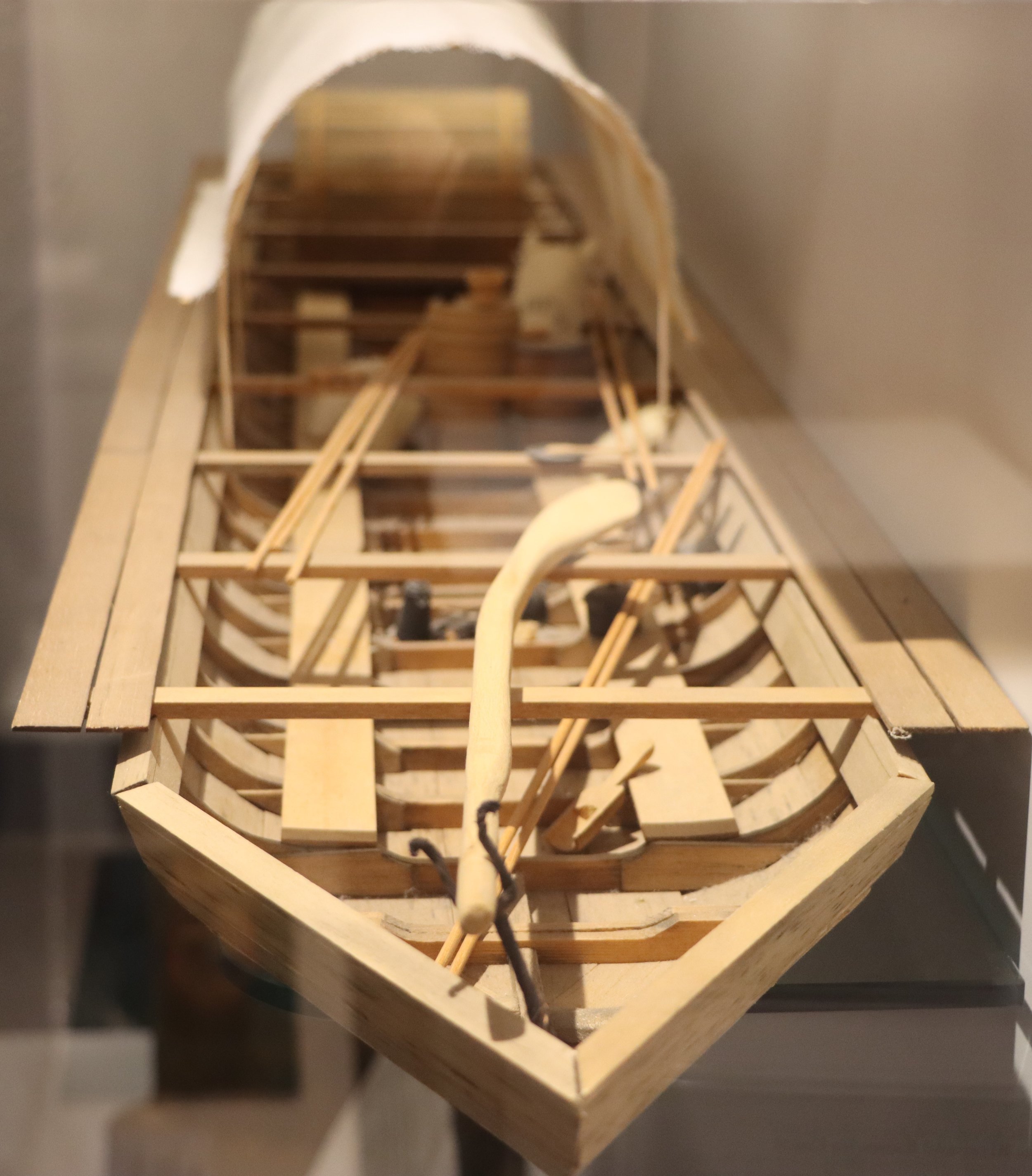
Model of the Batteau “Nekoosa” by James W. Douglas
95.113.1, Gift of James W. Douglas
Lynchburg postcard depicting the Kanawha Canal, shoe factories, and the Norfolk & Western Freight Depot.
2007.23.2, Gift of Eloise B. Peters
Creation of the Kanawha Canal
As America’s population continued to grow George Washington helped establish the Potomac Company. It was the company's goal to develop links between the Potomac, James, and Ohio Rivers via networks of roads, canals, and locks in order to expedite the transportation of produce and people between the East and the West. In 1785, the James River Company was formed, with Washington as honorary president, to build locks around the falls at Richmond. The stretch of canal running through Lynchburg was not completed until 1840.
The Kanawha Canal allowed much easier transport by way of locks around the falls and towpaths, allowing a new style of boat to be pulled by mules and horses on a towpath. This cut the 8-day journey to Richmond down to only 33 hours. Once the canal was completed to Buchanan in 1851, the canal began its heyday, peaking in 1860. Nearly 200 boats regularly transported goods such as tobacco and wheat from western Virginia to market, and returned home with finished goods from Richmond.
The James River and Kanawha Canal in Lynchburg by David Hunter Strother “Porte Crayon”
69.45.3-L, Lynchburg Museum System
“I never travel on the canal without wondering how we ever got on without it— one can travel without any escort and not feel the need of one at all. I hope you will soon try it and if Uncle William cannot come you must be as independent as we were and come without him.”
Only six passenger packet boats ran on a regular basis. Packets could carry 30 to 40 people and took approximately 33 hours to reach Lynchburg via canal.
Advances like the canal and the railroad improved transportation for all Lynchburg residents, but they especially benefited the women. The Daniel women of Point of Honor never traveled great distances, mainly moving between Lynchburg, Union Hill, Richmond, and the hot springs in western Virginia, with an occasional trip to Philadelphia. Organizing a trip for them was further complicated by their need for an escort; when going by carriage, they required an escort for every trip.
The canal and railroad were safe and convenient enough to allow them to travel on their own. One of Sarah Daniel's nieces wrote her aunt about the pleasures of traveling on the canal:
“I never travel on the canal without wondering how we ever got on without it-- one can travel without any escort and not feel the need of one at all. I hope you will soon try it and if Uncle William cannot come you must be as independent as we were and come without him.”
The Packet Boat Marshall
Known as the finest packet boat to travel the James River & Kanawha Canal, the Marshall carried the body of Stonewall Jackson from Lynchburg to Lexington, his final resting place, in 1863. Jackson succumbed to friendly fire wounds received at Chancellorsville. During the time of the Civil War, and for some time following, the citizens of Lynchburg revered the memory of Stonewall Jackson, as well as the Marshall, through its association with him. Over the years, many artifacts regarding the Marshall were donated to the Lynchburg Museum, allowing us to have a fuller understanding of packet boats on the James River & Kanawha Canal.
Postcard of the Packet Boat Marshall
89.15.3, Lynchburg Museum System

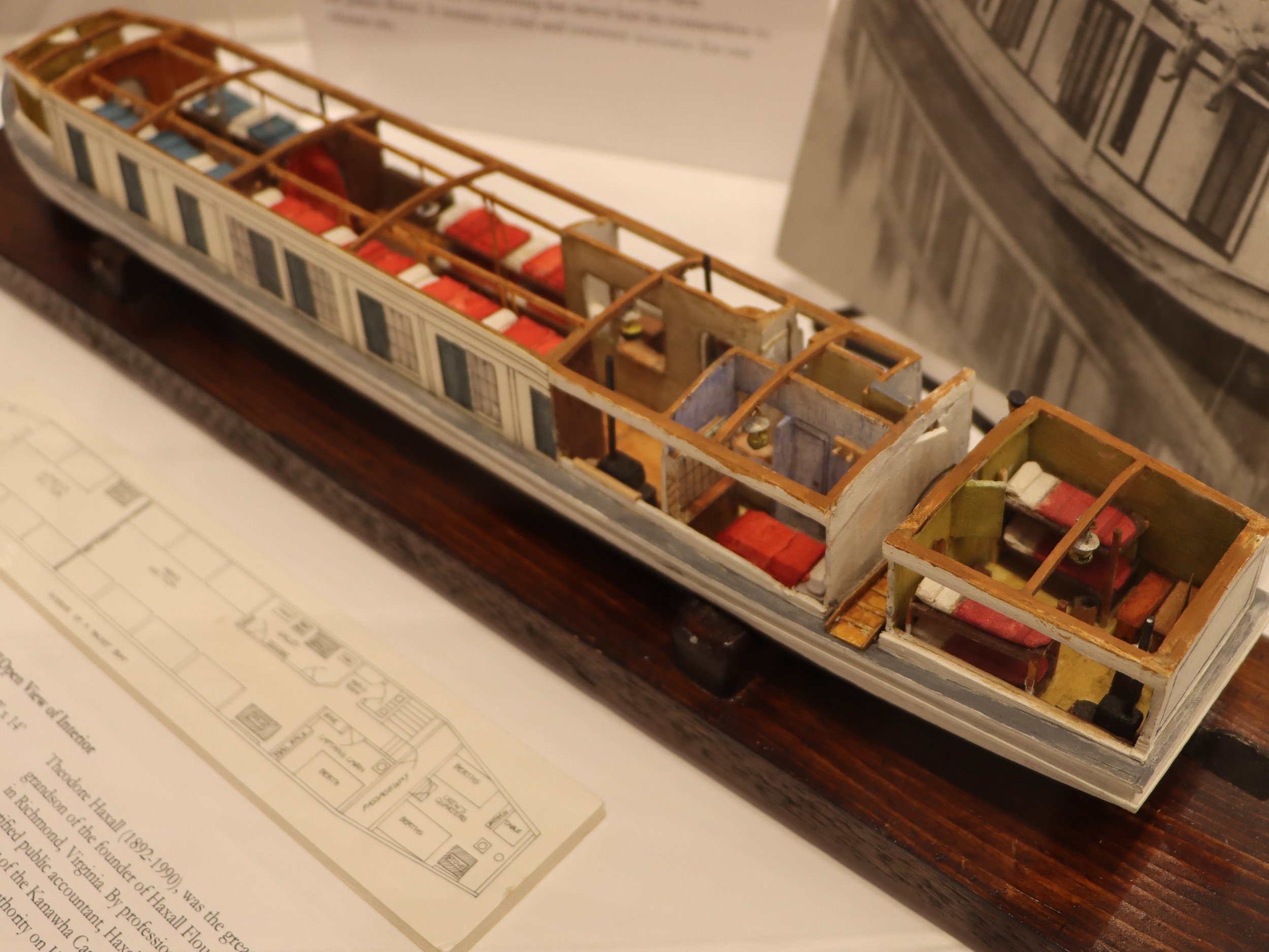
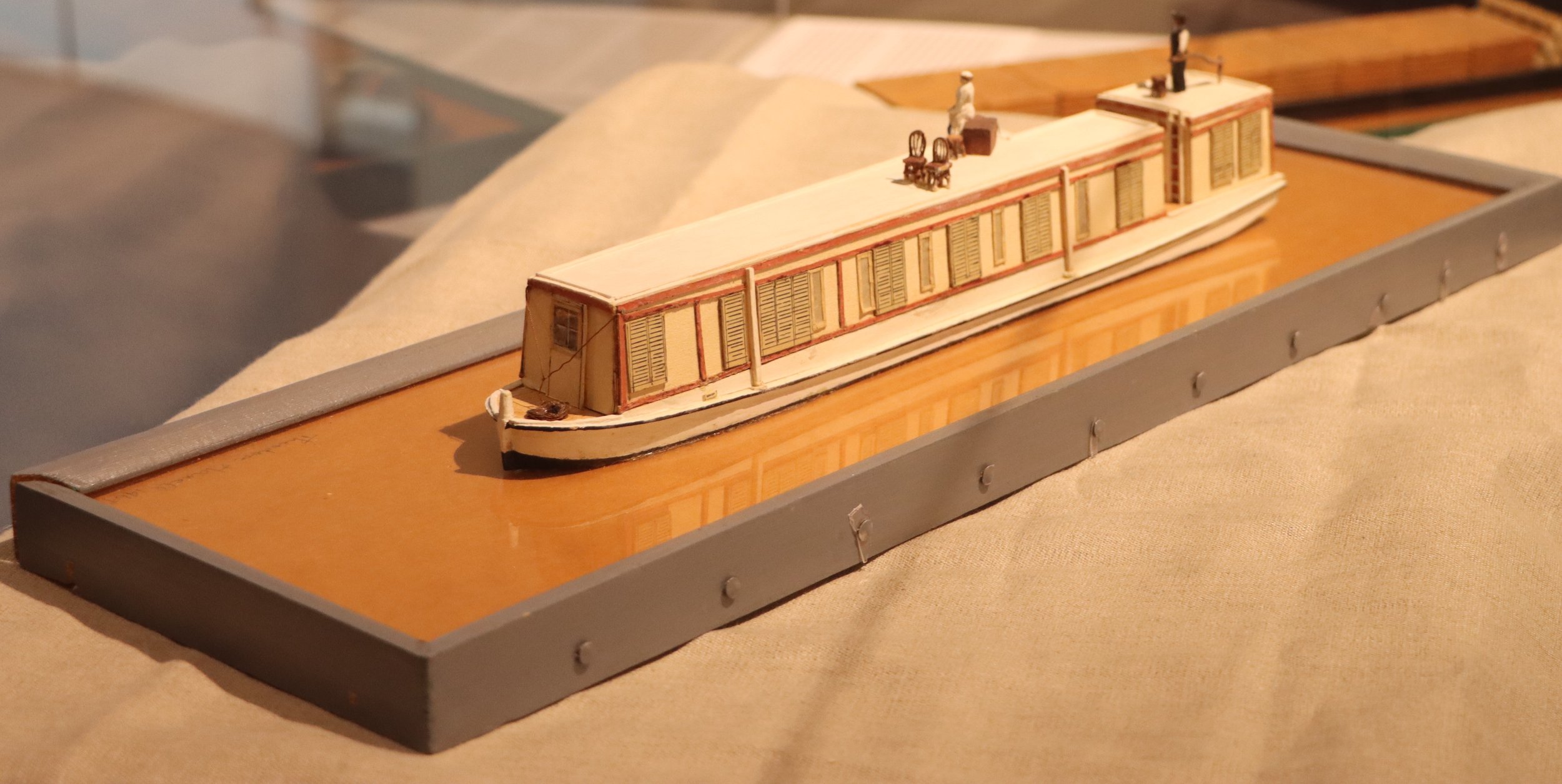
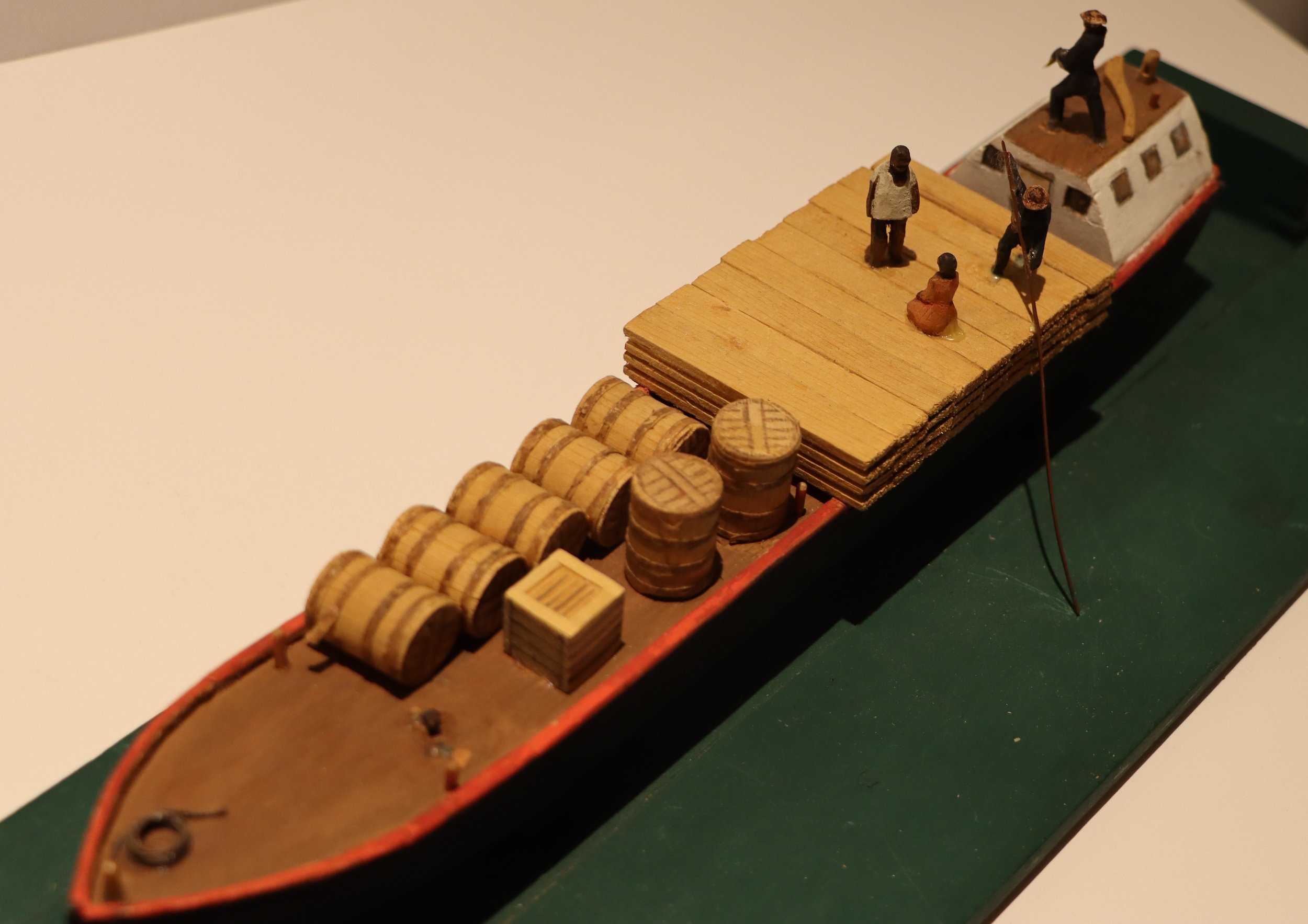

Marshall Packet Boat Model constructed by William C. Sowers, Jr.
87.1.1, Gift of Mrs. William C. Sowers, Jr.
Packet Boat Models constructed by Theodore Haxall (1892-1990): 2021.40.15, 2021.40.9, 2021.40.5, 2021.40.3
Transfer from the Valentine Museum, Richmond, Va.
The “Old” Canal
By the time the Chesapeake and Ohio Railway was built through to the Ohio River in 1873, the Kanawha Canal had sustained overwhelmingly costly damage from the Civil War and flooding. As a result, the railways took on the role of freight transport, and the. The once vital canal closed to traffic in 1877. Remnants of the Kanawha Canal can still be seen at the bottom of Ninth Street near Amazement Square and the Depot Grille.
Canal, Packet Boats, with Railroad Ties Ready to Replace Tow Path
X-243-2, Lynchburg Museum System
Freighter Carrying Railroad Ties Model by Theodore Haxall
2021.40.14, Transfer from the Valentine Museum, Richmond, Va.
The Vital James
Today improved highways and railways have supplanted the need for freight to be transported by water, but the James River still draws people to its banks, nevertheless, the annual Batteau Festival reenacts the original 8-day boat trip from Lynchburg to Richmond each June. In more recent years, people have moved into renovated factories and warehouses to be close to the river and restaurants have opened on top of high buildings and sites to get a river view. Throughout its history, Lynchburg has never lost its connection to the James River. It remains a vital and constant resource for our vibrant city.
Photo from annual James River Batteau Festival
Photo from annual James River Batteau Festival
Share Your History!
Do you have any artifacts or information related to a historic garden club in Lynchburg? We would love for you to share your history with us! The Lynchburg Museum System is actively seeking material to illustrate the full history of our city.
Call (434) 455-6226 or email museum@lynchburgva.gov









